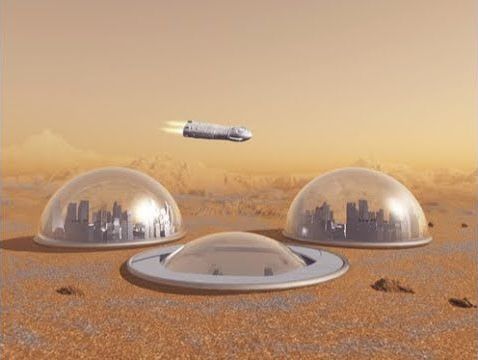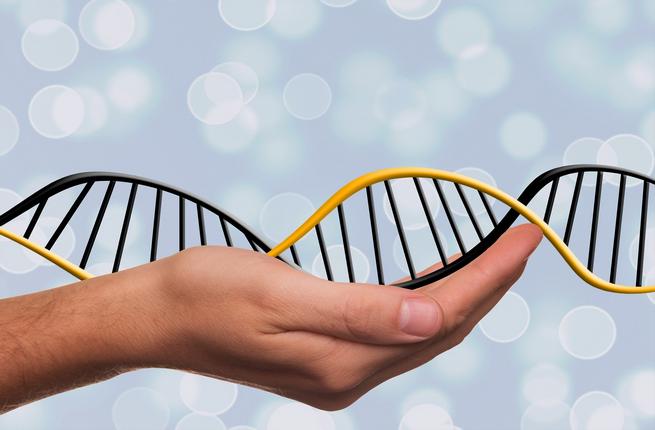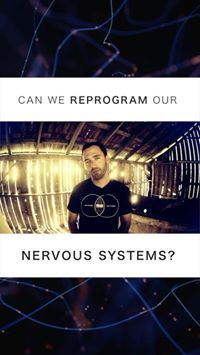Un-edited Zoom video of Seeking Delphi episode #42. Host Mark Sackler interviews former NASA Mars navigator Moriba Jah.

Un-edited Zoom video of Seeking Delphi episode #42. Host Mark Sackler interviews former NASA Mars navigator Moriba Jah.

Nearly every day, new discoveries are pushing the genetics revolution ever-forward. It’s hard to imagine it’s been only a century and a half since Gregor Mendl experimented with his peas, six decades since Watson and Crick identified the double helix, fourteen years since the completion of the human genome project, and five years since scientists began using CRISPR-cas9 for precision gene editing. Today, these tools are being used in ways that will transform agriculture, animal breeding, healthcare, and ultimately human evolution.
Common practices like in vitro fertilization (IVF) and preimplantation embryo selection make human genetic enhancement possible today. But as we learn more and more about what the genome does, we will be able to make increasingly more informed decisions about which embryos to implant in IVF in the near term and how to manipulate pre-implanted embryos in the longer-term. In our world of exponential scientific advancement, the genetic future will arrive far faster than most people currently understand or are prepared for.
Continue reading “Building a Positive Genetic Future for All” »
Scientists have been attempting to come up with an equation to unify the micro and macro laws of the Universe; quantum mechanics and gravity. We are one step closer with a paper that demonstrates that this unification is successfully realized in JT gravity. In the simplified toy model of the one dimensional domain, the holographic principle, or how information is stored on a boundary that manifests in another dimension is revealed.
How did the universe begin? How does quantum mechanics, the study of the smallest things, relate to gravity and the study of big things? These are some of the questions physicists have been working to solve ever since Einstein released his theory of relativity.
Formulas show that baby universes pops in and out of the main Universe. However, we don’t realize or experience this as humans. To calculate how this scales, theoretical physicists devised the so-called JT gravity, which turns the universe into a toy-like model with only one dimension of time or space. These restricted parameters allows for a model in which scientists can test their theories.

We call this PTSD. The question is whether we can reprogram our nervous system? In Stealing Fire, authors Steven Kotler and Jamie Wheal discussed advances in psychology, technology, neurobiology and pharmacology — and whether they help us map healthy nervous systems? Can we then use that data and create new designer compounds to recalibrate the nervous systems of those suffering from PTSD? Can we tweak our nervous systems for human flourishing? I hope so. Recent breakthrough in MDMA psychotherapy might be only a taste of what’s to come. Filmed and toned by @j.elon.goodman ||@mapsnews @mapscanada @meetdelic @psychedelicsocietysf #psychedelics @synthesisrtrt #mentalhealth #creativity #depression #anxiety #psychotherapy #therapy #inspiration #motivation
Freeman Dyson, renowned scientist and scholar, has died at 96, according to his daughter Mia.
The British-born scientist and professor emeritus spent much of his career as a physics professor at the Institute for Advanced Study in Princeton, according to his biography on the institute’s website. He was among 29 scientists who supported the Obama administration’s 2015 nuclear deal with Iran. In 1967, he also acted as a military adviser regarding the use of tactical nuclear weapons in the Vietnam War, and in 1984 he wrote a book on the dangers of nuclear warfare.
A futurist and space-enthusiast, Dyson had several scientific concepts named after him, including the “Dyson Tree,” a genetically engineered plant that would be able to survive in a comet and grow in space. One of his ideas, the Dyson Sphere, was featured in an episode of the sci-fi series Star Trek.
O.o um what?
Over the past few years biologists have developed several lines of evidence showing that one particular protein molecule inside cells plays an extraordinary variety of life-protecting roles, so much so that the molecule has been dubbed a “guardian angel.” The findings are leading to greater knowledge of how life works and to a deeper understanding of the root causes of cancer.
So pervasive is the molecule’s role that scientists in four areas of biology were on the trail of it, each field unaware, until recently, of the protein’s importance in the others.
Continue reading “Guardian Angel‘ Protein Molecule Inside Cells is Identified” »
Starting at 9PM EST tonight (noon New Zealand Time).
Press Release (ePRNews.com) — WASHINGTON — Feb 27, 2020 — World Future Day is March 1. This will be the seventh year that futurists and the general public will conduct a 24-hour, round-the-world conversation on the future on March 1 at 12 noon in whatever time zone they are in. Each year, total strangers discuss ideas about possible worlds of tomorrow in a relaxed, open, no-agenda conversation. Futures research is shared, collaborations are created, and new friendships are made.
The Millennium Project, a global foresight participatory think tank, will host this conversation on the future in collaboration with the Association of Professional Futurists (APF), Humanity+, UNESCO’s Global Futures Literacy Network, the World Academy of Art and Science (WAAS), and the World Futures Studies Federation (WFSF).
NORTH Korea has brutally executed a coronavirus patient for going out in public, reports claim.
Kim Jong-un’s dictatorship is dealing with the virus with an iron fist after the man was put to his death for dodging quarantine to go to a public bath.
The patient was arrested by officers and immediately shot as the country takes sickening measures to avoid the killer outbreak spreading.
When I tell people I am a transhumanist, it often raises an eyebrow – or several questions. What is transhumanism? What is a ‘posthuman’? Why would anyone want to live forever? This article will briefly respond to these questions (amongst others) and consider what this may mean for the education sector. Key questions will be identified in the area of transhumanism and education as four themes are considered: teachers, human hardware, curriculum and lifelong learning. With ‘trans’ meaning ‘across’, transhumanism is a ‘technoprogressive’ socio-political and intellectual movement (Porter, 2017) that involves transforming our primitive human selves into selves enhanced through technology. Transhumanism aims to develop our physical, emotional and cognitive capacities and thus to open up new possibilities and horizons of experience (Thompson, 2017). The end goal is one day to become ‘posthuman’: combating ageing and freeing ourselves from current biological limitations.
